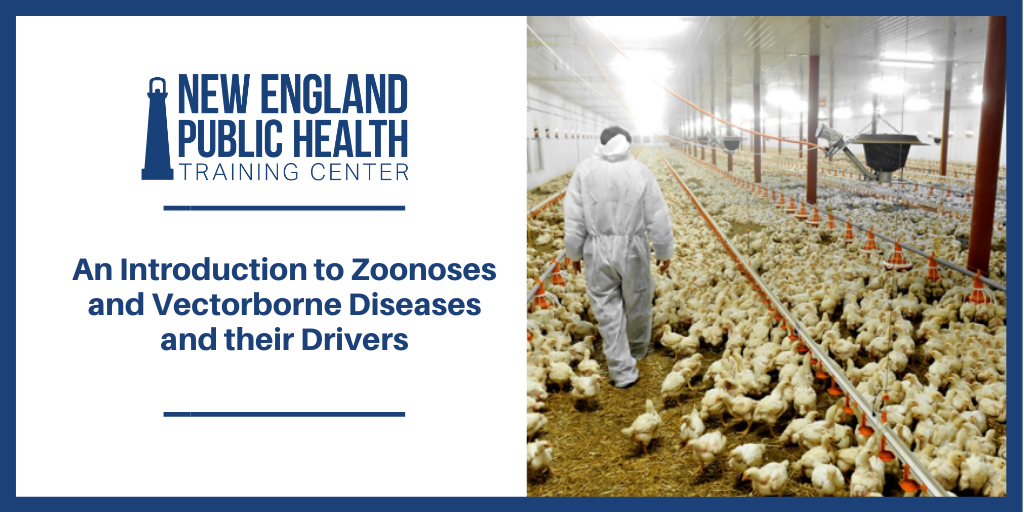An Introduction to Zoonoses and Vectorborne Diseases and their Drivers
About this Webinar
In this series of four screencasts, you will be introduced to zoonotic and vectorborne diseases and their drivers. In the first of four screencasts the public health practitioner is introduced to zoonoses and vectorborne diseases and how they differ from other infectious diseases. In three subsequent screencasts, the factors (drivers) that influence zoonoses and vectorborne disease are explained, including human systems, human-animal-environment interaction, and environmental change. Multiple disease-specific examples are provided, including COVID-19.
Zoonotic diseases are those that can be passed between humans and other vertebrate animals and vectorborne disease are those that are transmitted by an arthropod vector like a flea or tick. Because non-human animals serve as a disease reservoir or vector, disease prevention and control strategies differ from other infectious diseases. More than half, an estimated 60%, of all the kinds of infections that people can get are zoonotic and 75% of emerging infectious diseases, including COVID-19, are zoonotic. There are many human-driven factors that influence zoonotic disease emergence and re-emergence. These drivers include infrastructure, travel and trade, culture, agricultural intensification, interaction with domestic and wild animals, climate change, land use, and biodiversity.
What you’ll learn
After completing this recording, you will be able to
- Define zoonoses, vectorborne diseases, emerging zoonotic diseases, reverse zoonoses, reservoir host, amplification, dead-end host, and spillover
- List key drivers of zoonotic and vectorborne diseases
- Describe how the following disease prevention and control tools differ for zoonotic and vectorborne diseases: education, surveillance, vector control, diagnostics, outbreak investigation, host identification, and vaccination
- Define One Health and explain why this approach is useful for addressing zoonotic and vector-borne diseases
Subject Matter Expert
Lynn Zanradi Blevins
Lynn Zanradi Blevins has been practicing public health in government and academic settings for 20 years in the areas of infectious disease, environmental health, emergency preparedness, and One Health (human-animal-environmental health).

